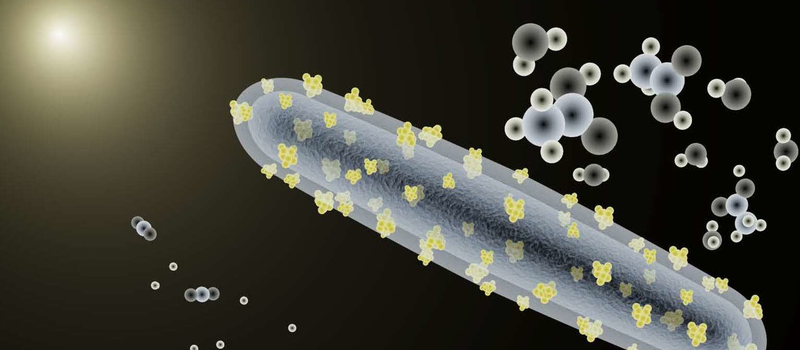This is weird science. Researchers at Lawrence Berkeley National Laboratory have taken some normal bacteria and made them photosynthetic by adding cadmium sulfide nanoparticles. Cadmium sulfide is what makes the garden-variety photoresistor work. That’s strange enough. But the bacteria did the heavy lifting — they coated themselves in the inorganic cadmium — which means that they can continue to grow and reproduce without much further intervention.
Bacteria are used as workhorses in a lot of chemical reactions these days, and everybody’s trying to teach them new tricks. But fooling them into taking on inorganic light absorbing materials and becoming photosynthetic is pretty cool. As far as we understand, the researchers found a chemical pathway into which the electrons produced by the CdS would fit, and the bacteria took care of the rest. They still make acetic acid, which is their normal behavior, but now they produce much more when exposed to light.
If you want to dig a little deeper, the paper just came out in Science magazine, but it’s behind a paywall. But with a little searching, one can often come up with the full version for free. (PDF).
Or if you’d rather make electricity, instead of acetic acid, from your bacteria be our guest. In place of CdS, however, you’ll need a fish. Biology is weird.
Headline images credit: Peidong Yang
















OK, here’s a question, acetic acid is an end product of the reduction of ethanol in animals so are there biological paths in bacteria that will convert acetic acid to ethanol in an energy efficient manner since we have these little buggers here producing gallons of vinegar when they get a suntan?
I think breaking ethanol to acetic releases energy the bacteria can use. Going the other way would require energy input, and would be pretty pointless in nature. We could maybe engineer something to do it, though.
Why bother? It’s a lot easier to start from sugars as feedstock if the end product you want are alcohols
Acetic acid would be the end product of the oxidation of ethanol, not the reverse.
Ethanol or Acetic fermentation are alternate pathways. Ethanolic fermentation produces 2 ATP equivalents per glucose. Acetic fermentation produces 10 ATP equivalents per glucose. This doesn’t imply there is 8 ATP worth of energy still tied up in the ethanol, but ethanol->acetic acid may still be an energy positive reaction.
Some related discussion: http://the-biologist-is-in.blogspot.com/2015/04/glucose-metabolism-burying-lead.html